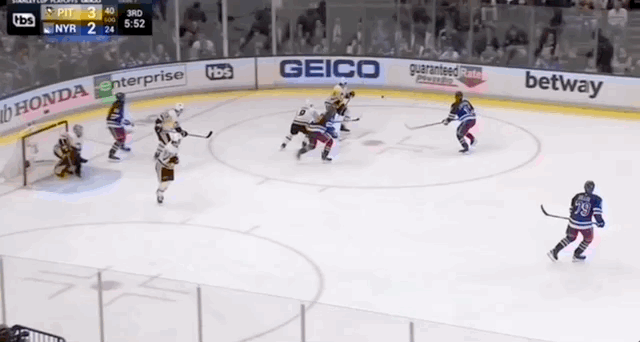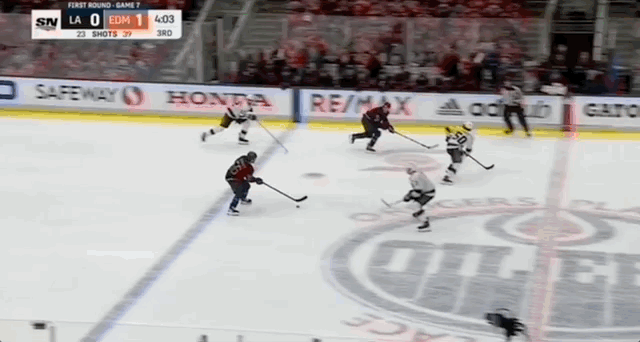Eight teams won four games to advance to Round 2 of the 2022 Stanley Cup Playoffs. But now each of them has to string together another four in their quest for 16 that ends with a championship.
So how can they do it? Let’s dive into a key factor on each side of the match up, good or bad, ahead of puck drop on these series.

It’s a rematch of last year’s Round 1 Battle of Florida, and this time the Panthers are hoping for a different result.
The Panthers were one of the best offensive teams in the league in the regular season, but the Capitals found a way to slow their rush-based play in Round 1 to just 5.8 slot attempts per 60 in transition at 5-on-5. Overall, Florida did score above expected at even strength, but was held back by their power play that went 0-for-18 in the last series.
Figuring out how to play their speed game and have some success on the advantage is crucial for Florida moving forward because they’re going against Andrei Vasilevskiy.

The Lightning goalie wasn’t at his usual Conn Smythe-calibre self in Round 1; he’s elevated his play these past two post-seasons and the Panthers know what it’s like to face that first hand. And when it mattered most in Game 7, Vasilevskiy responded by saving 1.13 goals above expected to elevate his team to this series.
Vasilevskiy’s play is going to be even more important if his team is without Brayden Point in their top-six. It puts more emphasis on keeping games close if a scoring threat like that misses any time in this series.

Everyone knows Igor Shesterkin’s the key to New York’s success; he was outstanding in the regular season, and bookended Round 1 with some stellar performances after slipping a bit in the middle.
But we’re looking for ~ new and fresh ~ angles here today. Let’s talk about how the Rangers can support Shesterkin at 5-on-5, which has been their weakness. In the regular season, their rush-based offence was subpar and it didn’t stand out in Round 1 either. But where they did succeed in their opening series was off the cycle, generating the fifth best rate of the playoffs of 8.4 slot attempts per 60.

That’s going to match against a team that’s very good at limiting their opponent from having sustained offensive pressure; the Hurricanes are active with their sticks and close shooting and passing lanes in their own zone. Carolina only allowed 4.4 slot attempts off the cycle in Round 1. So how the Rangers can permeate that is going to be important.
On the flip side, the Hurricanes excelled at creating shots off the cycle in the regular season. This is a team that’s really good at intercepting pucks from their teammates and holding the zone to keep offence alive. How will that pair against the Rangers, who allowed 9.0 slot attempts against per 60 in Round 1? It likely comes down to how Shesterkin can handle it if Carolina exploits that weakness.

Passing is such a key part of the Blues’ offensive generation, and makes their shots all the more dangerous. Between their top-nine, there are nine 20-goal scorers from the regular season and among them, there are dual-threats who can dish it and shoot it. The Wild did their best to take away passing lanes, and St. Louis still was victorious in Round 1. So now the question is whether they can play to their strengths against an even better Avalanche squad.
St. Louis is going to have to step it up to 1) outplay Colorado’s elite offensive attack and 2) make up for any deficiencies in their own zone with their blue line dealing with some key injuries. So if St. Louis can create more space for themselves with that puck movement, this series will be a whole lot more interesting.
That defence is a major advantage for Colorado, though, even injuries aside for St. Louis. We know they can score at even strength and on the advantage, so the key comes on the backend. At 5-on-5, the Avalanche allowed the lowest rate of quality chances against in Round 1. That was against a weak Predators team, so the question is how that holds up a team with a lot more skill in the Blues.

Lastly, Round 2 is highlighted by the Battle of Alberta. There’s a lot to unpack here, from how the Flames underwhelmed at times in Round 1 to how the Oilers are dealing with an injury to one of their best threats in Leon Draisaitl.
After each team faced off against a pretty defensively sound opponent in their opening series, it’ll be interesting to see if play opens up in Round 2. If that happens, the players we’re keeping an eye on are Connor McDavid and Johnny Gaudreau.
Each player rose to the occasion when it counted the most — McDavid was a force in Game 7 for the Oilers, literally willing his team to the next level. Gaudreau was able to beat Jake Oettinger’s incredible performance with the series-clinching goal in overtime. Now these two go head-to-head.

In the regular season, few players could carry the puck in as often as these two. Gaudreau’s 20.1 carry-ins per 60 ranked fourth in the league behind Jack Hughes, Nikolaj Ehlers, and Mathew Barzal. McDavid was just behind him at 19.0. They were also two of the best at creating offence in transition. Gaudreau was second to only Hughes with his slot attempts off the rush at 4.3 per 60. McDavid, on the other hand, was seventh with 3.7 attempts per 60.

Forget about the number of chances they set up with their stellar puck-moving abilities at such high speeds. That’s what makes them a key factor on each side of this match up.
Data via Sportlogiq.








COMMENTS
When submitting content, please abide by our submission guidelines, and avoid posting profanity, personal attacks or harassment. Should you violate our submissions guidelines, we reserve the right to remove your comments and block your account. Sportsnet reserves the right to close a story’s comment section at any time.